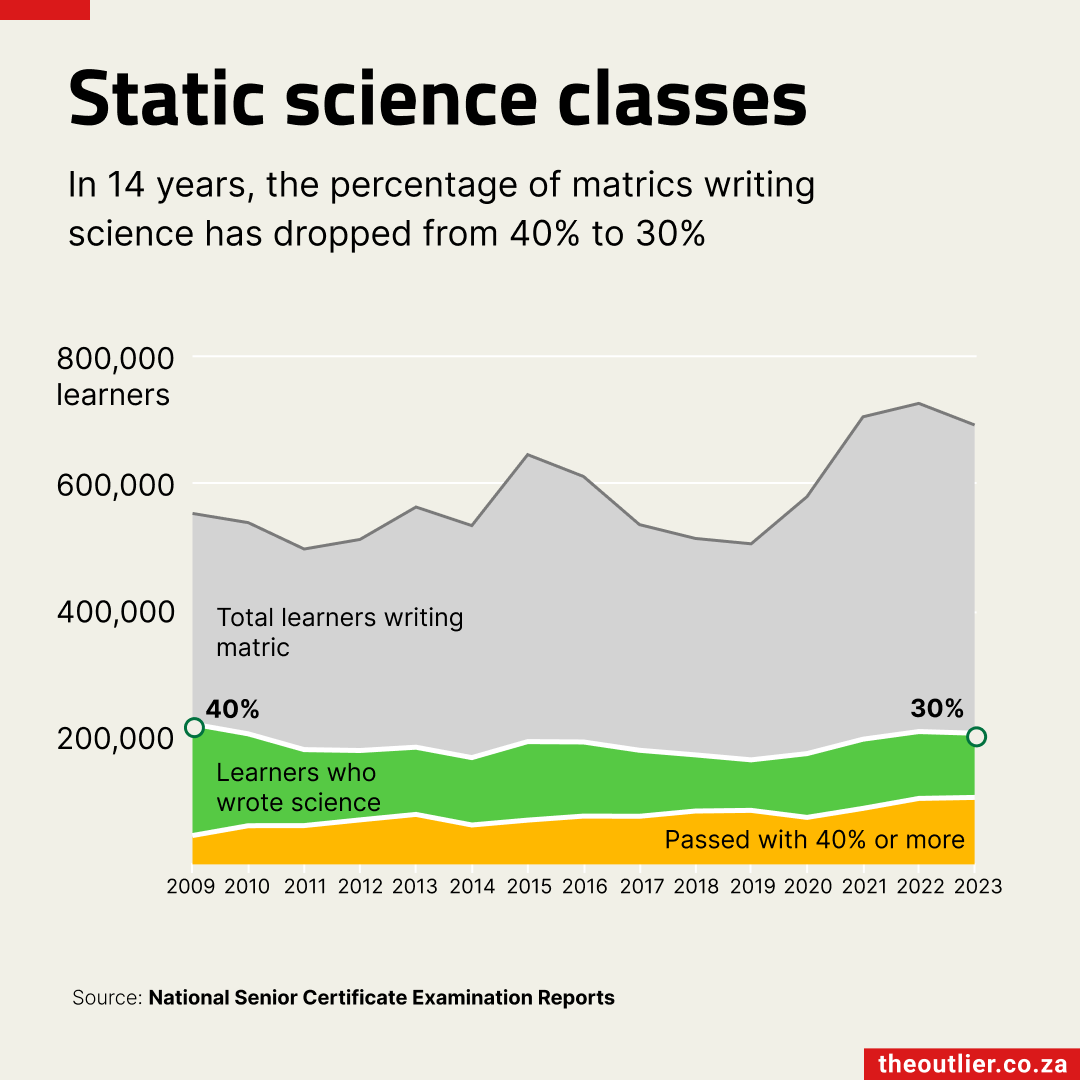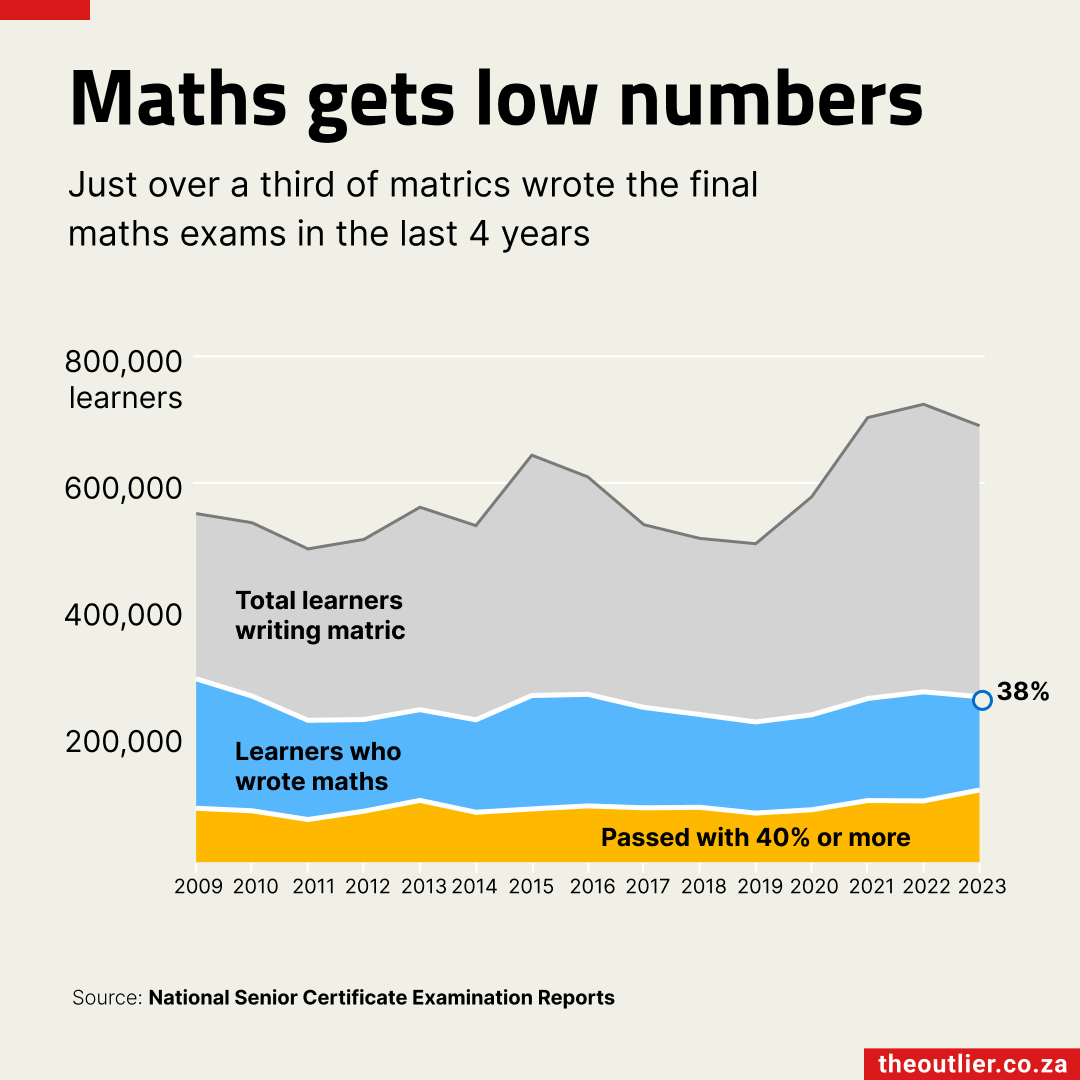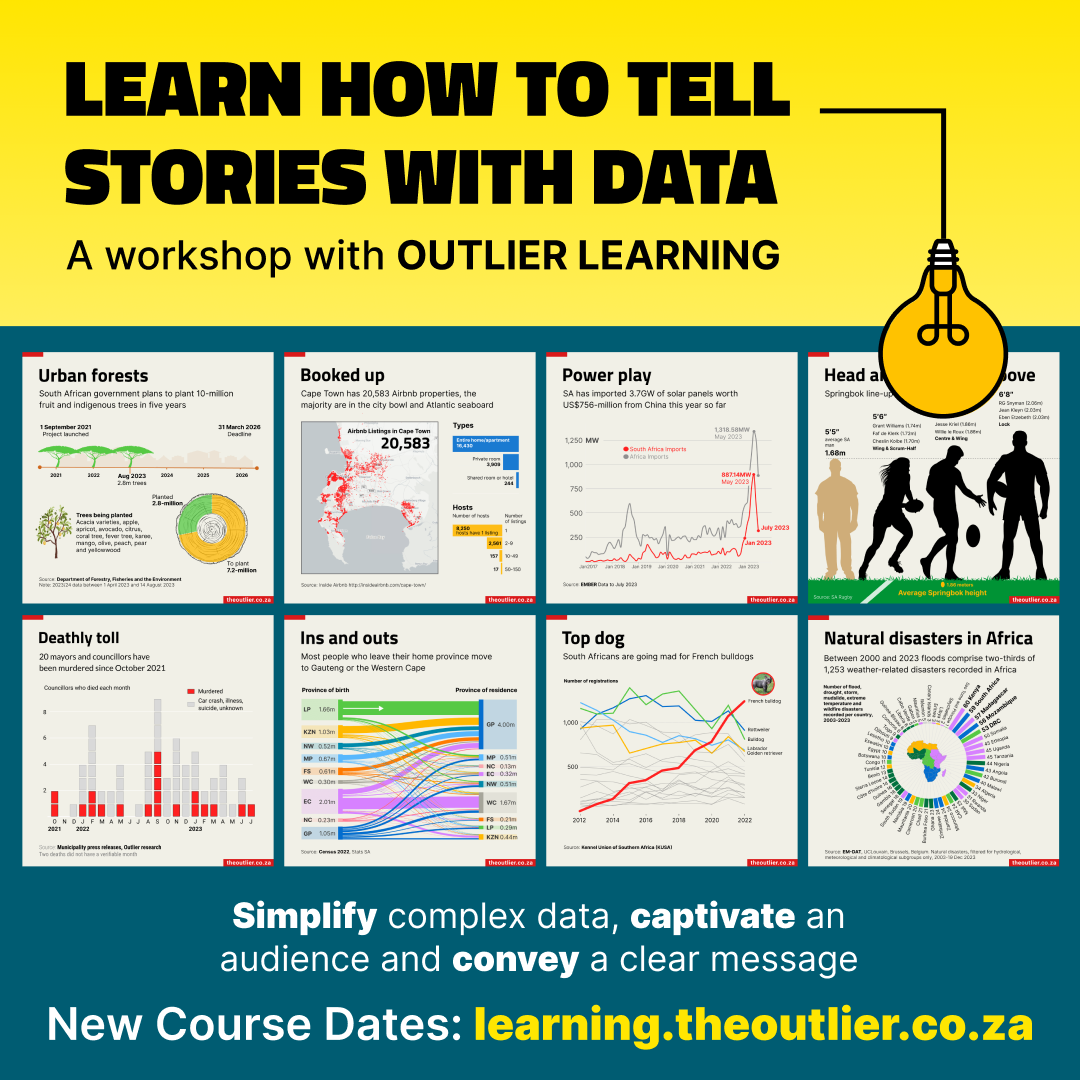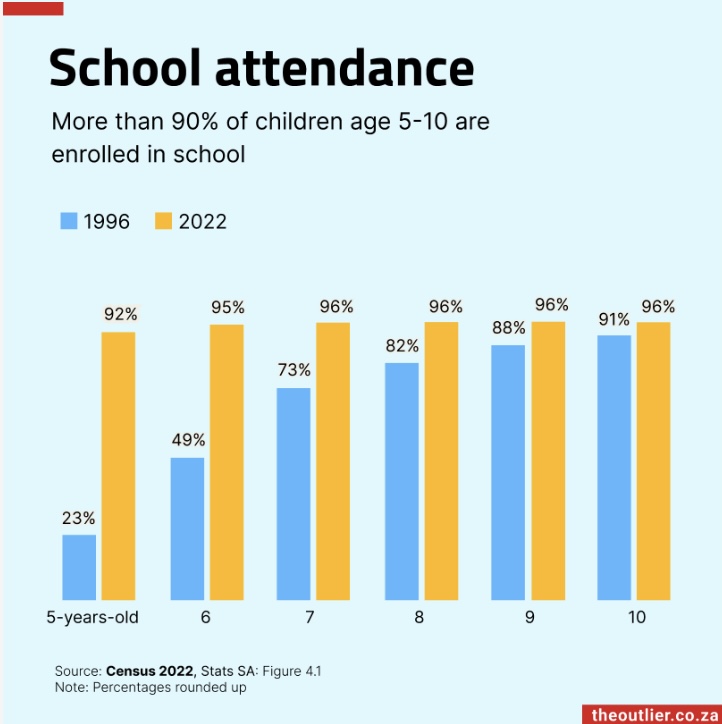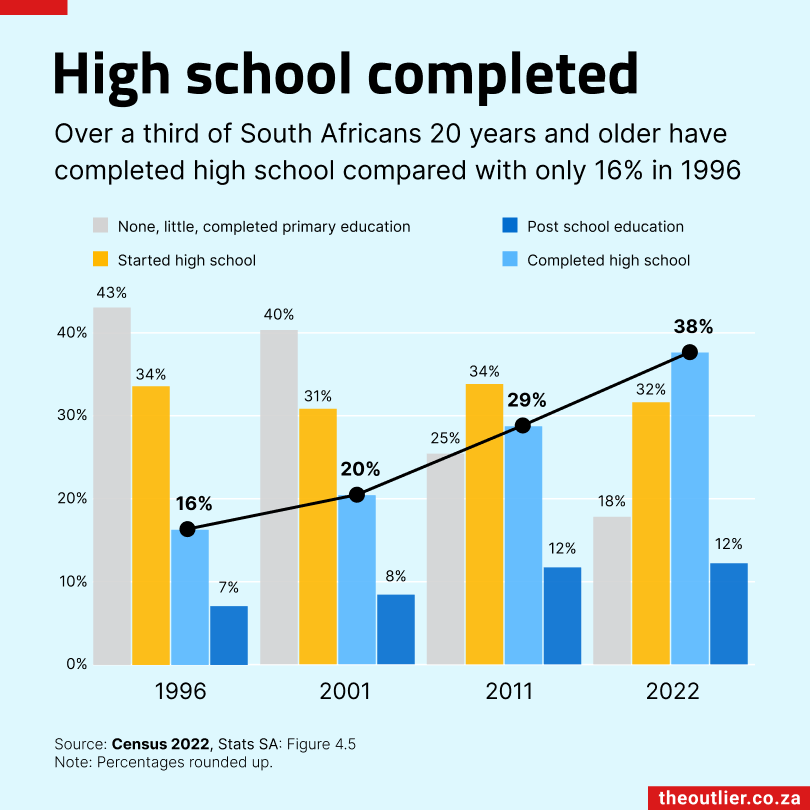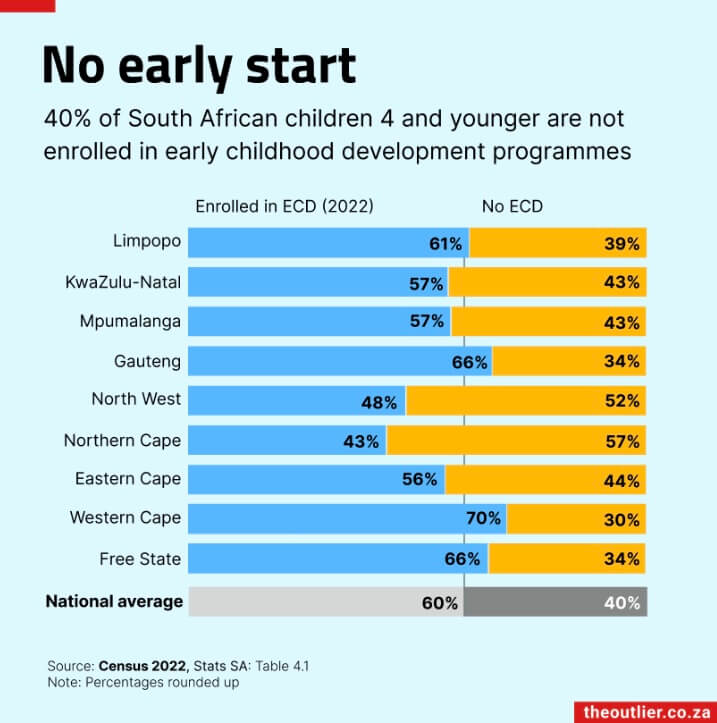More students need to do maths and science if SA wants to be part of the fourth industrial revolution
The Fourth Industrial Revolution (4IR) has widely been hailed as a chance for South Africa to unlock new opportunities and increase economic growth. But with declining interest and performance in maths and science at school SA risks being left behind.
The Fourth Industrial Revolution (4IR) has widely been hailed as a chance for Africa to unlock new opportunities and increase economic growth. A key part of 4IR is the need for advanced engineering skills (science, maths, technology) and South Africa will require more graduates with these skills to take part in the technological transformation. But with declining interest in maths and science at school, we risk being left behind.
4IR refers to a new era in which technologies such as artificial intelligence, robotics, cloud computing, drones and the “internet of things” are woven into the fabric of society and economy to enhance and “hyper-automate” large portions of the economy and agriculture and bring new services and abilities to the lives of citizens. 4IR is sometimes referred to as the “digital industrial revolution”.
The First Industrial Revolution used water and steam power to mechanise production. The Second used electric power to create mass production. The Third used electronics and information technology to automate production. Now a Fourth Industrial Revolution is building on the Third, the digital revolution that has been occurring since the middle of the last century. It is characterised by a fusion of technologies that is blurring the lines between the physical, digital, and biological spheres.
The Fourth Industrial Revolution: what it means, how to respond World Economic Forum
South Africa has earmarked 4IR as an opportunity. In May 2019 President Cyril Ramaphosa appointed the Presidential Commission on the Fourth Industrial Revolution. The commission delivered its recommendations in August 2020 and published these in the Government Gazette in October 2020 (PDF). The report focuses heavily on the need to create an enabling infrastructure for the development of 4IR technologies and businesses, including the need to develop the “human capital” required for 4IR development.
A key part of 4IR is the need for technical skills to foster and grow 4IR capabilities in South Africa as well as a labour force skilled in and able to manage the (mostly digital) disruptions in the changing workplace of the future.
While government has made numerous commitments to improving technical and science skills in the education system – Ramaphosa announced plans in 2019 to introduce subjects like data analytics and coding into the curriculum – by 2020 only 30% and 40% of learners who wrote the National Senior Certificate exams (aka matric) wrote the physical science and maths papers respectively, the lowest percentages since 2015.

To make matters worse, an additional 64 high schools stopped offering maths and science entirely in 2020. That means 446 (6.5%) schools in total didn’t offer the subjects, compared with 382 (5.7%) in 2019.

Carol Jaji, a digital skills trainer at the Tshimologong Precinct, an innovation and incubation hub in Braamfontein, Johannesburg, says maths, the study of numbers, shapes and patterns and science, the study of the inorganic world are “foundational subjects that play an important role in enhancing problem-solving skills and critical thinking, which learners need to adopt 4IR skills.” (Full interview)
Physical science also saw a plunge in its overall pass rate in 2020, with 66% of the learners who wrote the exam getting 30% or more – 30% is considered a pass. This was a drop of over 10 percentage points from the 76% who passed in 2019. The numbers for maths were even lower with 54% of learners achieving 30% or more, a one percentage point drop in 2019. Maths literacy obtained an 81% pass rate.
This highlighted a harsh reality – the majority of the few matric learners who took maths barely passed the subject.

An even harsher reality is the proportion of learners who passed physical science and maths with 50% or more. In 2020, about one in four (26%) of the students who wrote physical science and 22% (or just over one in five) learners who wrote maths got 50% or more.
Most science, engineering, medical and technical degrees usually require a foundation of grade 12 maths and science. But, if a high school learner did not take these two subjects and still wishes to pursue a career in line with the 4IR, there are other options says Robyn Verrinder senior lecturer of robotics, one of the development areas of 4IR, at the University of Cape Town.
“If a learner has completed their national certificate, but does not have mathematics they can enrol for bridging courses, which are short intensive learning blocks focusing on developing learners skills and allowing them to gain the necessary subjects for entry into higher education institutions.”
How does South Africa compare with the rest of the world?
The 2019 Trends in International Mathematics and Science Study (TIMSS) results, a study that measures a countries’ student achievement, highlighted South Africa’s lack of progress in maths and science.
TIMSS uses international benchmarks to measure achievement, with a score of 400 being the lowest benchmark. A score of 400 means that students only have basic knowledge of the subject. TIMSS normally assesses grades four and eight, but to better suit the country’s curricula, South Africa chose to assess grades five and nine.
South Africa fell severely short of the 400 mark requirement for both maths and science, obtaining only 374 and 324 points respectively for the grade 4 assessment, placing South Africa third last among the countries assessed.

The grade eight assessment of maths and science followed the same trend, scoring 389 and 370 points respectively, placing SA second last in maths and last in science.

According to the report, 26% and 17% of grade nines’ achievements in maths and science respectively, were considered too low for estimation. This means that their performance on the assessment was no better than what could be achieved by “simply guessing on the multiple-choice assessment items”, the report stated. In this category, South Africa’s percentages were the highest out of all the countries involved.
But, what happens when a student doesn’t take maths? According to the International Bureau of Education, the only other option is maths literacy, involving the mathematical needs of an individual in their everyday life, for example, budgeting.
In 2020, almost 60% of matric learners in South Africa opted for maths literacy, a trend that seems to be gaining momentum despite Ramaphosa’s 4IR plans.
Nick Moropane, principal at Makata High School in Mpumalanga, says his school only offered maths literacy in 2020 because all 40 of the matrics had unsatisfactory maths marks in grade nine.
“It’s just the perception that maths is difficult from home and also in the primary part, teachers did not do work or encourage these learners to do maths because they make maths a problematic subject,” Moropane says of students opting for maths literacy.
Dr Anthea Cereseto, CEO of the Governing Body Foundation, which promotes governance in public schools, explains that taking both maths and science is a gamble for matrics headed for university. “If you stick with mathematics and science and you fail both, you fail. So schools started advising the learners, being careful. So rather change to maths literacy, which you can pass quite well, stick with the science.”
If learners are being discouraged from taking maths and science and are making subject choices based on what is the easiest to pass, then what does this mean for the country moving forward?
Jaji emphasised that South Africa needs to keep abreast with the entire world in terms of technological advancements and skills development. “There is more to offer the learners and it is important to align skills development with industry needs,” she says.

